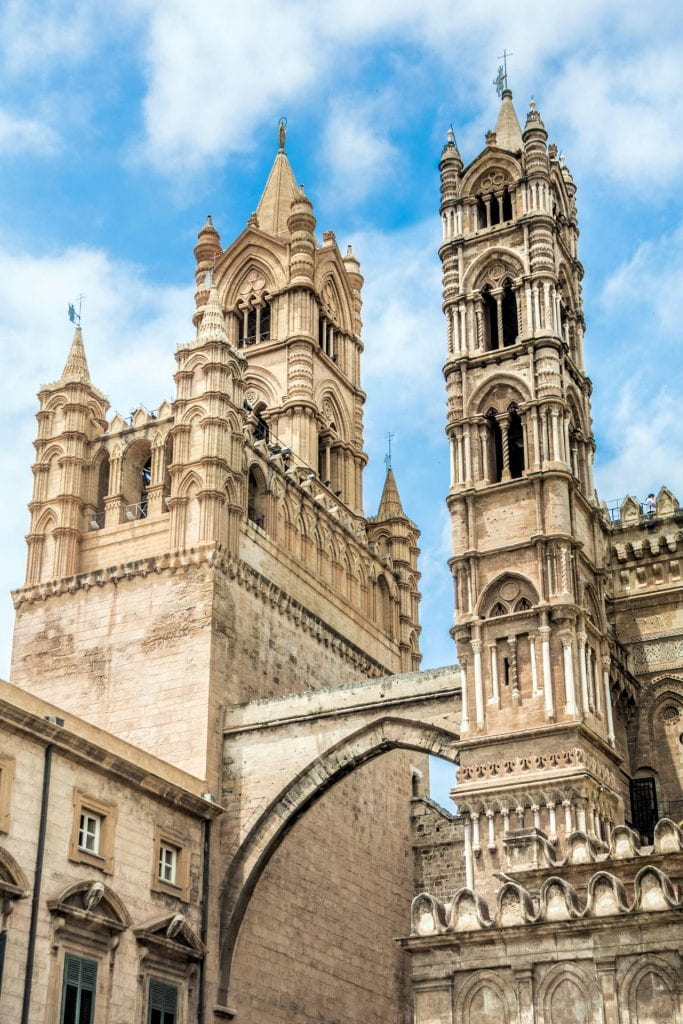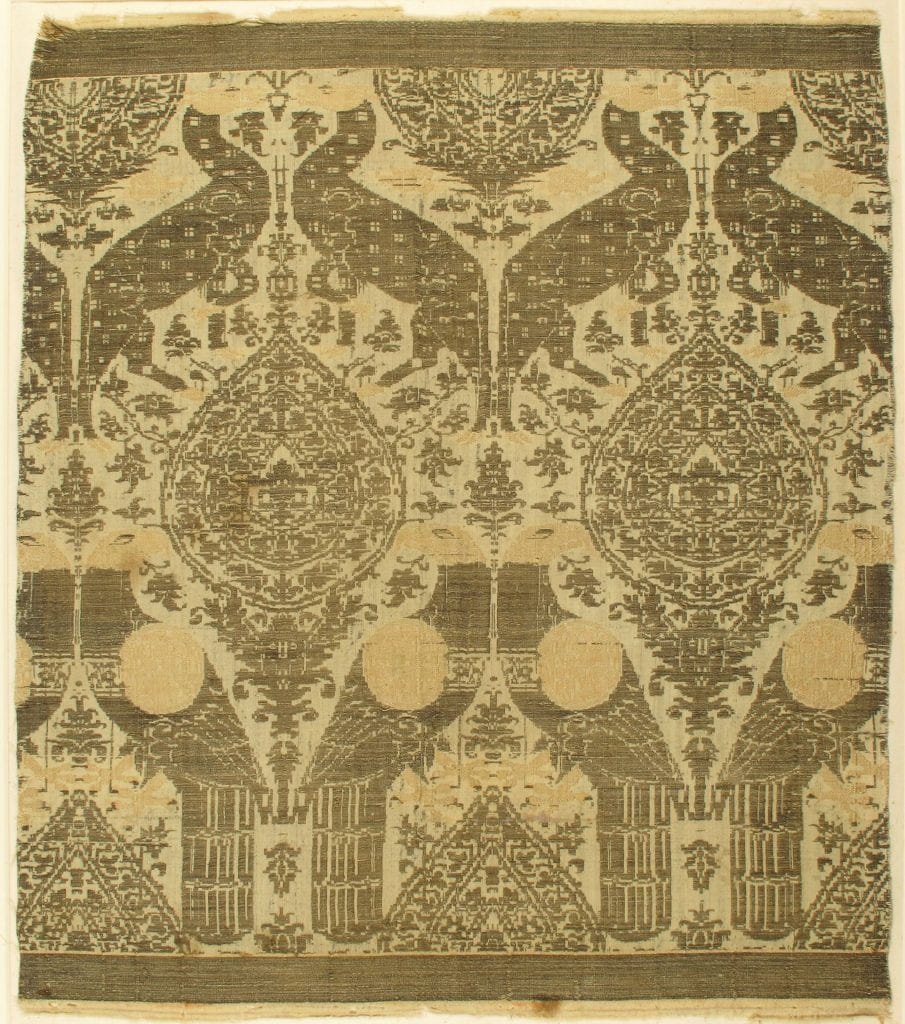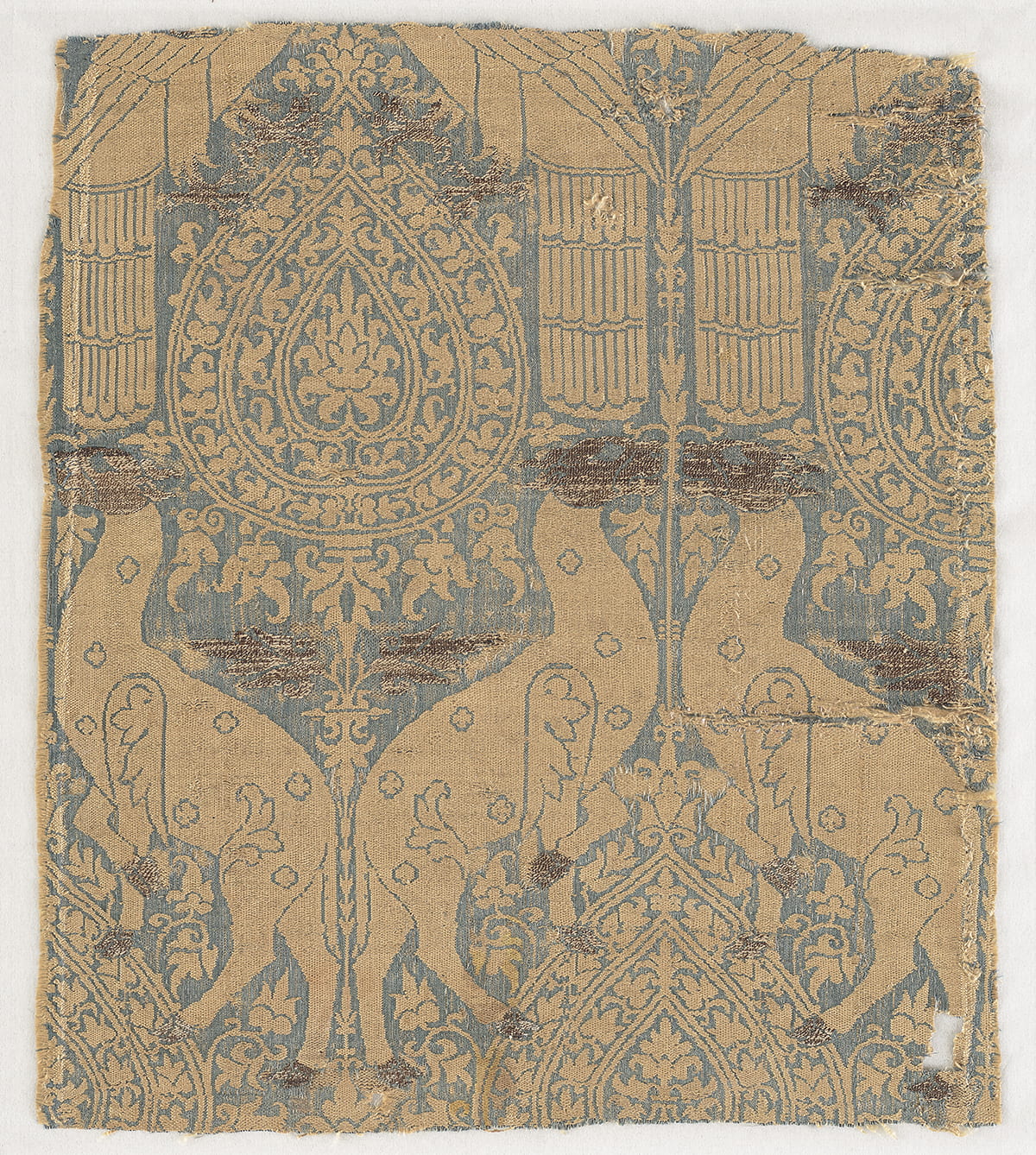Strategically situated between Eastern and Western trade routes, the island of Sicily was once one of the most desirable land-grabs in the Mediterranean. The island’s rich and colorful history has been influenced by the many groups who conquered it throughout the ages, including the ancient Greeks, Romans, Arabs, French and Spanish.
The House of Aragon came to power after the War of the Sicilian Vespers (1282-1302), ushering in a relatively peaceful time in Sicily. Mulberry trees grew on the island in abundance, and the cultivation of silkworms — which subsist on mulberry leaves — steadily fueled the silk weaving industry there and in the nearby cities of Lucca and Venice.
This rare silk fragment was created at the turn of the 14th century in a royal workshop in Sicily’s main city of Palermo, an important center of silk production. It was woven on an early drawloom using a structure called lampas, with additional brocading. This combination allowed the weaver to create complex, multicolored patterns with a dimensional effect.
The design features confronting pairs of falcons and gazelles, as well as teardrop shaped motifs with butas and palmettes. Metal-wrapped threads brocaded into the heads, wings and feet emphasize the animal figures against the woven blue ground. Similar motifs can be seen in other 14th-century textile fragments woven for the royal and religious elite in Spain, Sicily and on the Italian peninsula.


